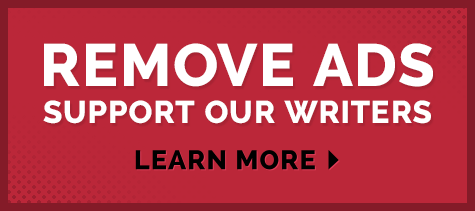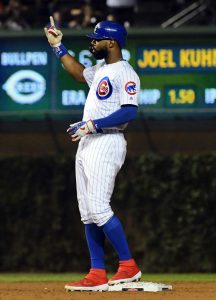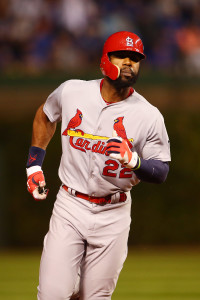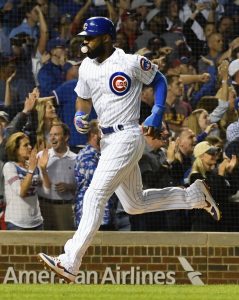Jason Heyward was removed from tonight’s game prior to the fifth inning due to illness, and Cubs manager David Ross told The Athletic’s Patrick Mooney (Twitter links) and other reporters that Heyward was sent to hospital for precautionary reasons. “He’s not a guy that you ever have concerns about, so when he says he is having trouble breathing and (feeling) light-headed, I just want to make sure everything’s all right,” Ross said.
It seems probable that Heyward will miss at least a game or two due to this situation even if everything checks out with doctors, though obviously the chief concern is that Heyward is healthy and well. The 31-year-old Heyward is enjoying by far the best of his five seasons in Chicago, entering tonight’s play with a superb .306/.421/.551 slash line and five home runs over 121 PA.
Some more items from around baseball…
- A rib/side injury has kept Marcus Semien out of action since August 29, though the Athletics shortstop could take batting practice on the field tomorrow, manager Bob Melvin told MLB.com’s Martin Gallegos and other reporters. That could be a precursor for an impending return for Semien, who can return whenever he is ready since he wasn’t placed on the injured list — the A’s had a team-wide break in the schedule due to a positive COVID-19 test. Semien is still looking to get on track this season, hitting only .229/.285/.379 over his first 151 plate appearances.
- Giants hurlers Jeff Samardzija and Drew Smyly each threw around 50 pitches in simulated game action on Saturday, manager Gabe Kapler told reporters (including Henry Schulman of the San Francisco Chronicle). Smyly has been out of action since August 2 due to strained left index finger, while Samardzija hit the 10-day IL on August 8 with a shoulder impingement. It isn’t yet clear when either pitcher could return, or in what roles they could be deployed in upon their returns. Kapler’s mention of relief work as a possible route for Samardzija is notable, given that “The Shark” has worked exclusively as a starter since the start of the 2012 season.
- Justin Verlander has begun throwing off a mound, Astros GM James Click said today during a pregame interview with Astros Radio (hat tip to The Athletic’s Jake Kaplan). A forearm strain has kept Verlander sidelined for all but one start of the 2020 season, though his latest rehab update provides some hope that Verlander could potentially still return at some point in the regular season or postseason.





